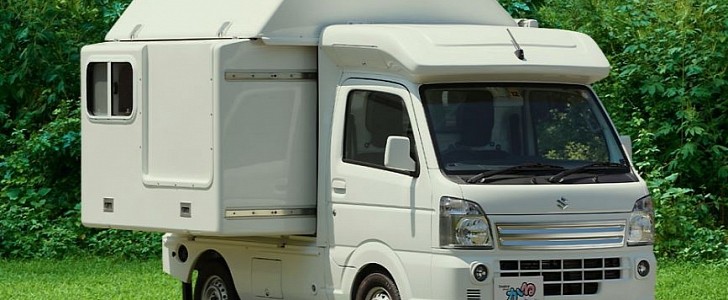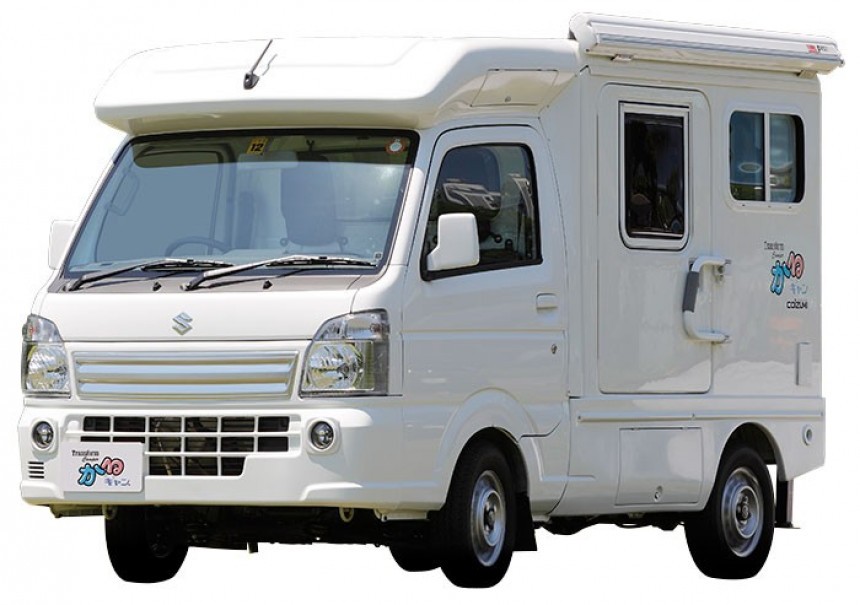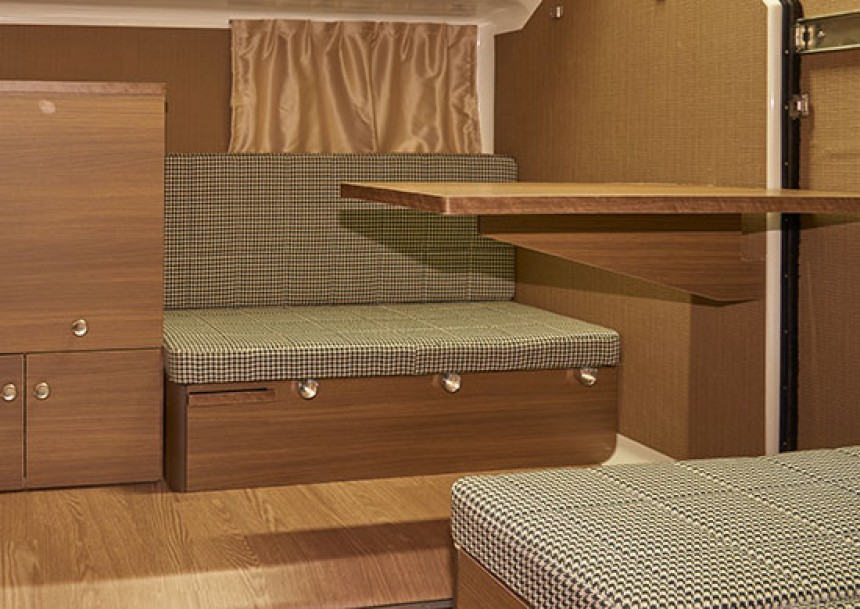The developments of the past couple of years have become wanderlust fuel even for the most determined homebodies. But that’s not to say that you have to have a “go big or go home”-type of approach to it.
In a world with rules and restrictions that change from week to week, and where mobility is no longer advisable, the regular Joe and Jane were left with no other choice than to adapt in every aspect of everyday life, including vacations. The personal car has become, now more than ever, the most desirable means of transport, including for vacations that would have otherwise included at least one trip by plane.
In short, recreational vehicles are seeing a boom in demand, and the market is welcoming the change through the introduction of more and more varied models. But that’s not to say that, in order to enjoy a short vacation with the family or with friends you need to go big or go home. You can actually go very small and take the home with you, if you’ll allow this pun.
Look no further than the Karucan Transform Camper, which you could describe as a classic example of a transformable camper. Available only in Japan and first presented in 2015 (and officially introduced at the 2016 Japan Camping Car Show), it’s often included on lists of the most surprising RVs in the world. Looking at it, it’s not difficult to understand why: in road mode, this thing looks like a small, rather boxy cargo van, but in camp mode, it actually resembles a house. It fails to provide the basics of a proper home, but that’s another story: squint a bit and you could see the outline of a house.
With the boom in RVs, more makers have embraced the transformer approach. Vehicles that explode at camp by means of slide up and outs, or tent expansions are ideal for people who will sacrifice a bit of comfort for the sake of better maneuverability on the road. The Transform Camper shows that the concept is not new, while also showcasing just how small you can go without losing the micro-home claim.
The Transform Camper uses a five-speed automatic Suzuki Carry van as a base, with a fiber-reinforced plastic (FRP) camper on top. In road mode, it hardly stands out: it’s a boxy cargo van measuring 3,395 mm (133.6 inches) in length, 1,930 mm (76 inches) in height, and 1,475 mm (58 inches) in width. At camp, the side rotates upwards to become the roof extension, and a side pulls out. Both extensions can be operated either by electric or manual winch, and they considerably expand the interior to provide accommodation and the basics for two people.
Extended, the camper is 2,860 mm (112 inches) in height and 2,090 mm (82 inches) wide, with an interior floorspace of about 7.1 square meters (76.5 square feet). In this area, you will find a dinette with a kitchenette, with the former turning into a bedroom at night, by folding up the table and connecting the two couches. As an extra, you can add a fold-down bed to the roof, and you have sleeping for four, though cramming so many people in such a small space is far from ideal.
The kitchenette includes a sink with counter space, a mini fridge and a 20-liter (5.2-gallon) water supply / drainage tank. Standard features include the stabilizing jack for the rear of the camper, a 105A traveling rechargeable sub-battery, and an openable window with a screen. The longer your planned stay, the more options you can add, including a storage box over the cab (which serves as an extra layer of insulation), solar panels on the roof, a Webasto air heater, solar panels, side awning, or a portable microwave oven to throw a few dinners together with minimal effort.
Clearly, to say that this is a micro-home is somewhat of a stretch. It’s a cramped and very bare-bones camper, but one that can provide shelter and the minimum in creature comforts for a couple of adventurers who don’t mind sleeping rough every once in a blue moon. It beats sleeping in a tent, and it gets extra points for being ingenious and very cute – if you’re the kind of adventurer who pays any kind of attention to the latter aspect. The compact form also helps with city use and storage, in that you won’t have to worry about either.
The Transform Camper shows that you can have a relatively comfortable home on the road for the short-term, in a surprisingly small footprint. However, at a starting price of approximately $26,000, you have to really want a tiny camper to overlook the minuses.
In short, recreational vehicles are seeing a boom in demand, and the market is welcoming the change through the introduction of more and more varied models. But that’s not to say that, in order to enjoy a short vacation with the family or with friends you need to go big or go home. You can actually go very small and take the home with you, if you’ll allow this pun.
Look no further than the Karucan Transform Camper, which you could describe as a classic example of a transformable camper. Available only in Japan and first presented in 2015 (and officially introduced at the 2016 Japan Camping Car Show), it’s often included on lists of the most surprising RVs in the world. Looking at it, it’s not difficult to understand why: in road mode, this thing looks like a small, rather boxy cargo van, but in camp mode, it actually resembles a house. It fails to provide the basics of a proper home, but that’s another story: squint a bit and you could see the outline of a house.
The Transform Camper uses a five-speed automatic Suzuki Carry van as a base, with a fiber-reinforced plastic (FRP) camper on top. In road mode, it hardly stands out: it’s a boxy cargo van measuring 3,395 mm (133.6 inches) in length, 1,930 mm (76 inches) in height, and 1,475 mm (58 inches) in width. At camp, the side rotates upwards to become the roof extension, and a side pulls out. Both extensions can be operated either by electric or manual winch, and they considerably expand the interior to provide accommodation and the basics for two people.
Extended, the camper is 2,860 mm (112 inches) in height and 2,090 mm (82 inches) wide, with an interior floorspace of about 7.1 square meters (76.5 square feet). In this area, you will find a dinette with a kitchenette, with the former turning into a bedroom at night, by folding up the table and connecting the two couches. As an extra, you can add a fold-down bed to the roof, and you have sleeping for four, though cramming so many people in such a small space is far from ideal.
The kitchenette includes a sink with counter space, a mini fridge and a 20-liter (5.2-gallon) water supply / drainage tank. Standard features include the stabilizing jack for the rear of the camper, a 105A traveling rechargeable sub-battery, and an openable window with a screen. The longer your planned stay, the more options you can add, including a storage box over the cab (which serves as an extra layer of insulation), solar panels on the roof, a Webasto air heater, solar panels, side awning, or a portable microwave oven to throw a few dinners together with minimal effort.
The Transform Camper shows that you can have a relatively comfortable home on the road for the short-term, in a surprisingly small footprint. However, at a starting price of approximately $26,000, you have to really want a tiny camper to overlook the minuses.













